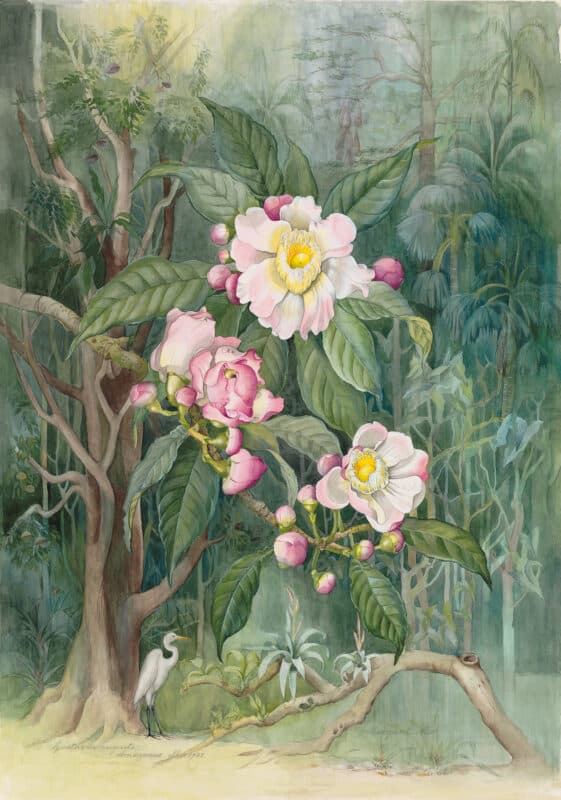Botanical Art
Encountering the Amazon through Margaret Mee’s Lens
A consideration of Mee’s implicit and overt depictions of symbiotic ecosystems in her paintings of the Amazon Rainforest.
Table of contents
The artistic career of botanical artist and environmental activist Margaret Mee truly blossomed when, at the age of 43, she and her husband Greville moved from England to Sao Paulo, Brazil. It was here that she cultivated her appreciation for plant-life, which was the central focus of her paintings. Over the span of 30 years, Mee completed 15 expeditions through the Amazon basin during which she – guided by natives – sketched, painted, and collected plants. As her artistic career matured, so too did her awareness of the precarious nature of the Amazon rainforest which was, and remains, threatened by large-scale mining and flagrant deforestation.
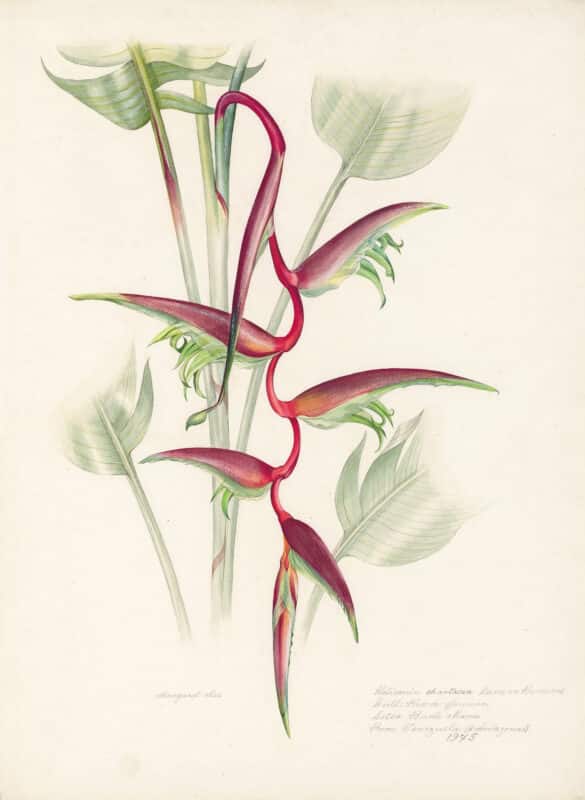
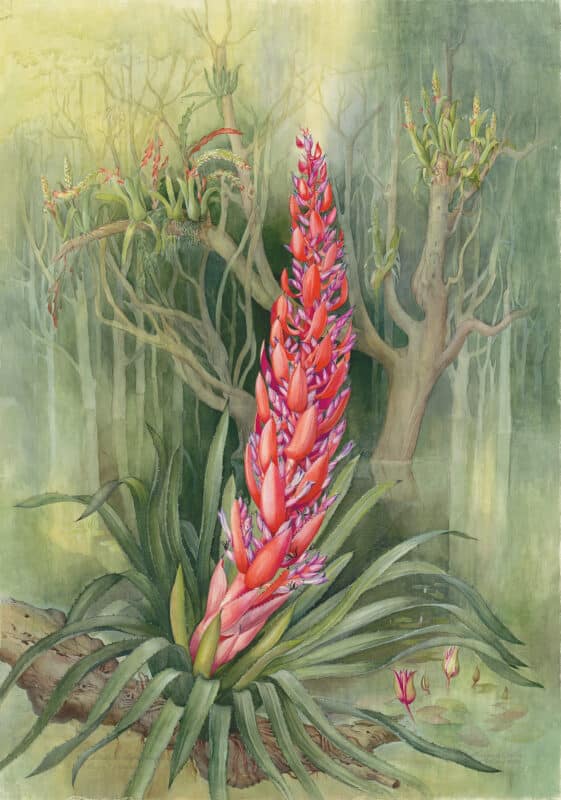
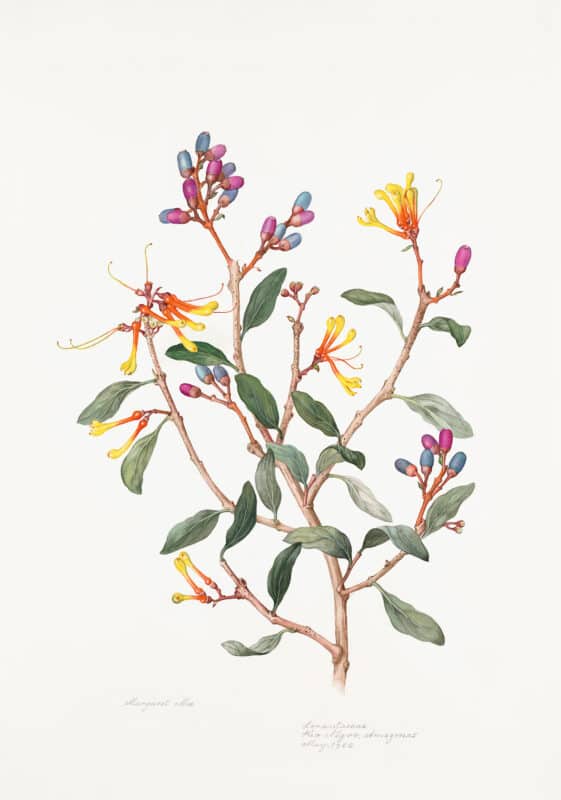
Mee’s Creative Methodology
The plant life in Mee’s gouache and watercolor paintings retains an immense degree of vivacity. This is due, in part, to her creative methodology which began with her first sketching the specimens in the wild, studying their color nuances and details, before plucking them for later reference in her Sao Paulo studio where the final painting was rendered. The life-like quality of her paintings is aided by her meticulous understanding of the plants and their environments. Significantly, her paintings capture orchids, bromeliads, cacti, and clusa in a manner that alternates between deeply rooting the plant in its native environment and depicting the plant against a sparse or ambiguous backdrop. Mee’s alternation between identifiable and indistinguishable backgrounds presents a picture of the Amazon rainforest that observes both a holistic view of its ecosystems as well as a focused view of the individual plant species. As a result, we are provided with a detailed pictorial analysis of the botany and ecosystem of the Amazon rainforest.
Focus on the Singular Specimen
Take for example Pl. 2, Urospatha sagittifolia and Pl. 3, Nymphea rudgeana in which Mee renders two varieties of water plants. In the former, the succulent tendrilled petals of the urospatha sagittifolia wind upwards, feeling out their environment with delicate fingers. Similarly, the elephant ear leaves of the sagittifolia quiver and bow, paying homage to the aspiring flower. Mee renders the plant stem so that they do not end abruptly, or conclude in any sort of soil, water, or other grounding agent. Rather, her plant is extracted from its environment and presented in its singularity for our viewing pleasure. Despite its extraction, the plant appears alive and united in relation to the implicit environment. However, Mee eliminates the background in order to lend sole focus to the botanical specimen.
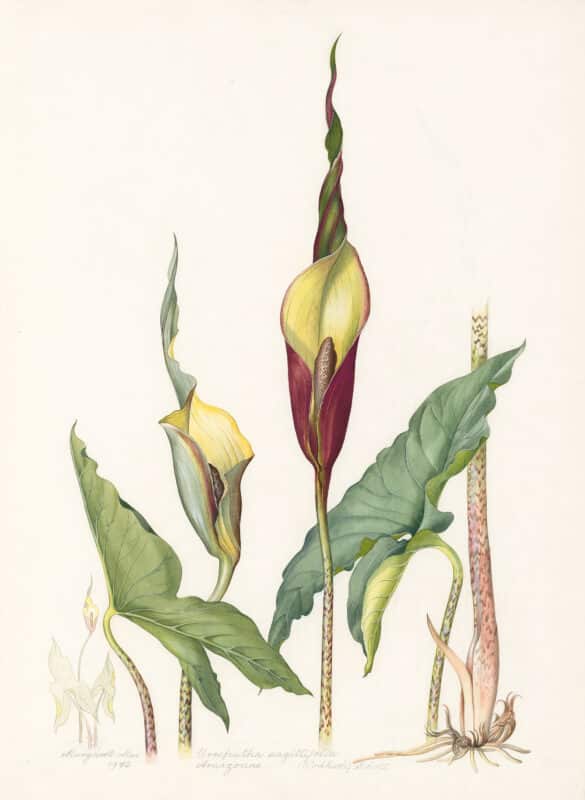
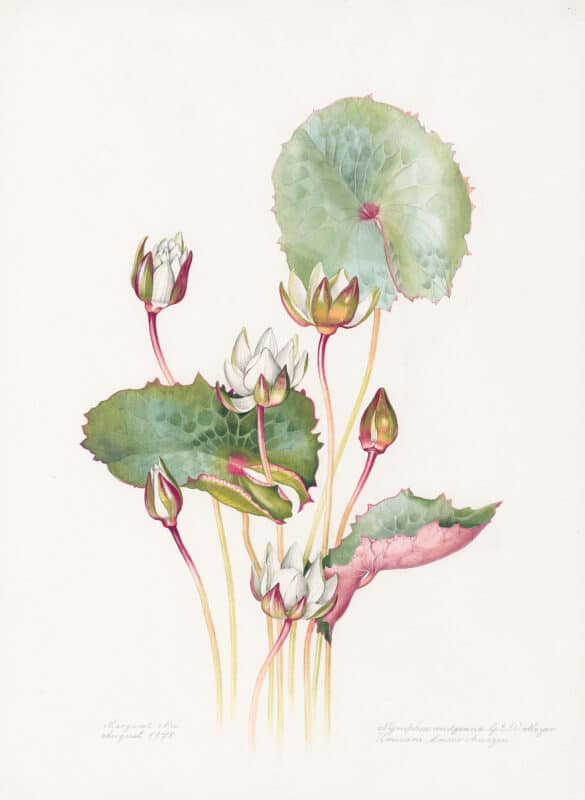
Likewise, in Pl. 3, Nymphea rudgeana Mee captures the waterlily with exhaustive detail. The textures of the lily pads are fragile and tangible, with a dappled light glancing off them, lending the lilies shape and expression. The fractured reflectivity of the leaves conjures the expression of the water that, though not shown, would have been present at the roots of the plant. In this painting, Mee elicits a sense of place without visibly rendering the water lilies environment. Rather, through her composition of the flower’s components, she alludes to the plant’s surroundings. A sense of gravity and dimension unites the flowering composition, which further buttresses the life-like presence of the plants.
Representing Interconnected Ecosystems
In creative contrast to the paintings discussed above, the Gustavia pulchra Pl. 5, and Gustavia augusta Pl. 10 are deeply embedded in their surrounding ecosystem through background delineation. In the former, Mee captures the gustavia blossoming on a knobby bough that overreaches the still waters of the Rio Gurupi below. A humid backdrop of creeping vines and drooping ferns frame the central flowers. Likewise, the calm reflective waters of the river mirror the verdant canopy above. Lastly, a small jewel-like hummingbird flits across the composition, instructing us on the interconnected ecosystem of the flora and fauna of the rainforest.
Similarly, Gustavia augusta Pl. 10 displays the blossoming flower up against a heaving background of sweaty vibrancy. Centrally focused, the pink blossoms are featured in various states of unfurling. The diagonal gustavia bough is contrasted by the verticality of the surrounding trees, which ardently surge upwards. Once again, Mee has included animal and plant life in order to indicate the gustavias surrounding environment and to highlight the necessity of each organism for the function of the other. Acclaimed journalist and author Carolyn Fry suggests that Mee’s increasing concern with habitat loss in the Amazon prompted her to add the forest backgrounds into her later paintings.
“After witnessing the destruction of the rainforests first-hand, she began including the natural habitat of the flowers she painted in order to emphasize the interdependency of plants and their environment. In 1988, shortly before her death, she wrote:”…the [Amazon] forest has changed considerably and the lovely plants I have painted along the Rio Negro have disappeared. I can remember my excitement on my first journey there, when I moored my boat to a Swartzia tree, full of perfumed white flowers, among the great trees on the banks. The changes have been disastrous, and the destruction and burning of the forests arouse fears for the future of our planet.” (pg. 51)
The Plant Hunters, Carolyn Fry, 2009
Mee renders her compositions with close-up perspective, palpable texture, and exhaustive detail in order to conjure the experience of encountering the plants in the wild. As previously mentioned, many of her botanical works fall within two broad categories; those with backgrounds, and those without. When viewed in conjunction, these two categories extrapolate upon the environment of the Amazon jungle by focusing on both the minutiae of the individual plants, as well as their locale within the broader ecosystem. In this way, her art presents an environment in which the symbiosis of organisms is essential, and the significance of the individual plant is paramount.




